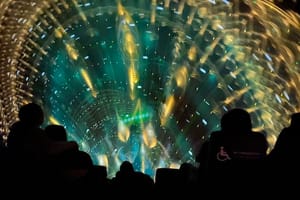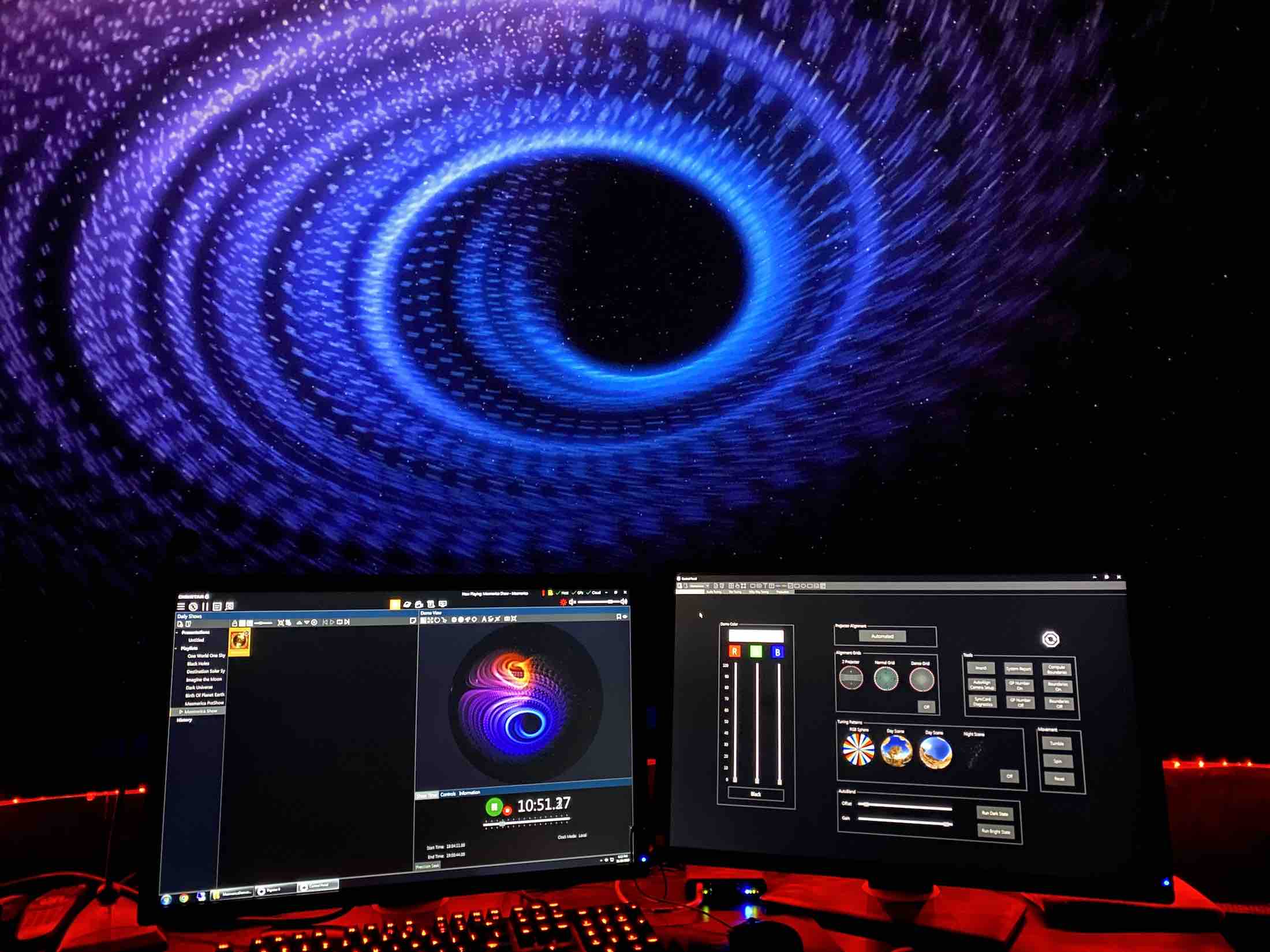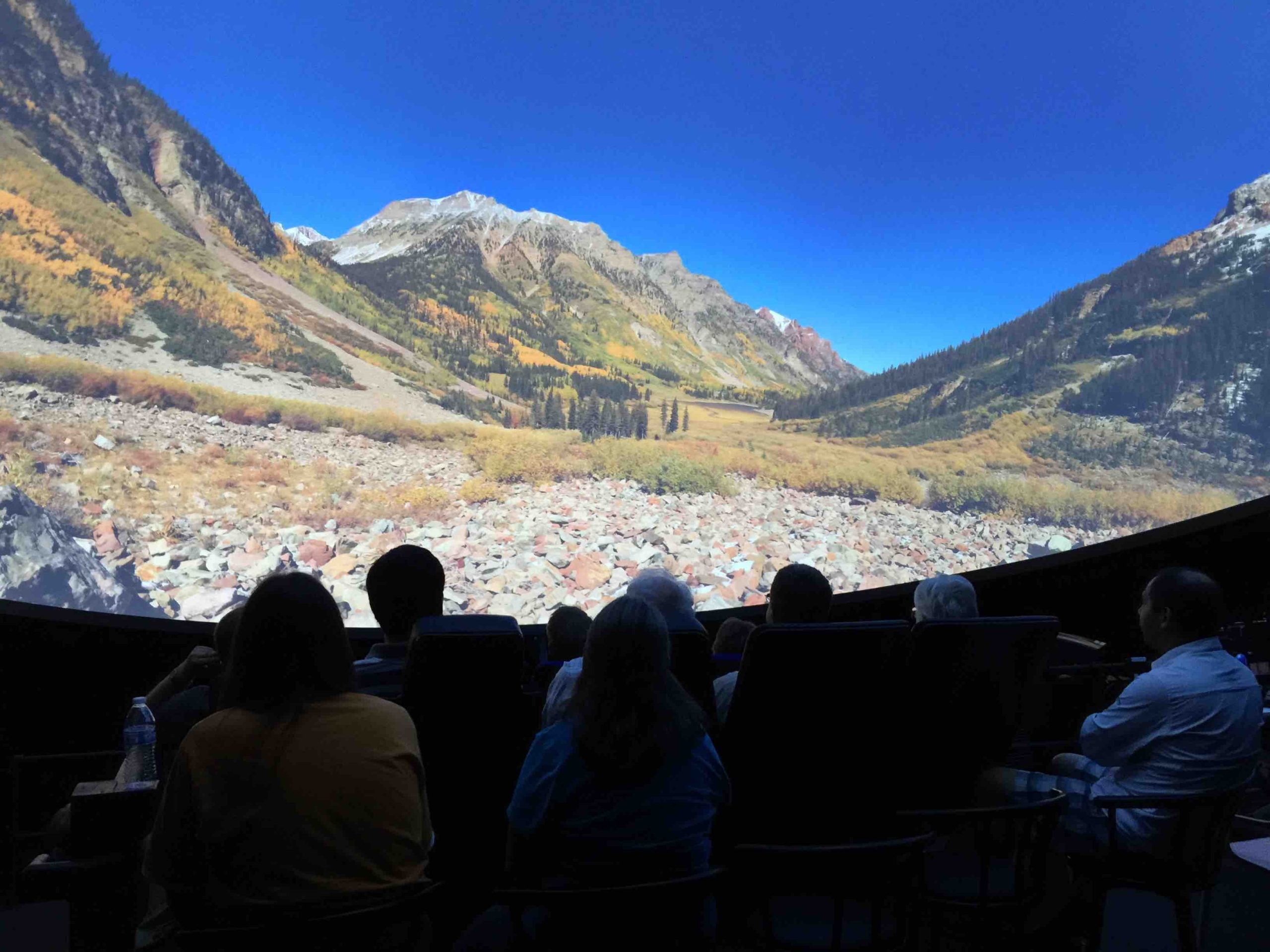
MovieMaker: What are the average run-times for these films?
Michael Daut: Typically fulldome films are about 22 to 25 minutes. This way the domes can turn over the theater every half hour. There are some films that hit the 40- to 45-minute running time, but my instinct has always been to let the topic guide the length of the film. Most theaters are not hard and fast on turning the theater over every half hour.
MovieMaker: Outside of runtimes, what are some other fundamental ways fulldome differs from a traditional movie?
Daut: The first thing you have to remember is that you’re in a space that is surrounding you on all sides. You’re no longer a voyeur in another room looking through a window. You’re actually inside the room where the story takes place. This reality takes the power of editing in traditional cinema off the table. Because you, the audience, are actually in the space, the experience almost feels theatrical. You’ve got to figure out how you transition the audience from one scene to another cleverly, because just changing shots from a close up to a wide shot to a medium shot to a cutaway or an over the shoulder — those rules don’t really apply. The audience feels like they are there, so shifting camera perspectives means moving the audience unnaturally (and impossibly) from place to place inside the experience. The story has to unfold in front of audiences in a different sort of way, so editing requires a completely different mentality and sensibility.
You’ve got to think about it differently because your audience is inside that experience with you, and they are moving with you through the experience. You have to determine where they are: Is it a first-person experience for them? Is it a third-person experience? And if it is third person, how close are they to the thing that’s happening on screen?

Digistar 6, the world’s leading digital planetarium system runs a Mesmerica show
You have to be careful as a moviemaker to warm up the audience and almost not let them know that they’re already too close to the experience, so that they can actively engage. Otherwise you can overwhelm them very quickly and make them pull back, which is why sometimes people fall asleep in the dome. It’s not because they’re bored, but because they’re overwhelmed. If the experience isn’t handled skillfully it can cause an audience to shut down.
MovieMaker: You’ve written about the difficulty of leading the audience from one visual focal point to another organically without them worrying about what they are missing. When I use VR or play video games, I end up swiveling around anxiously because I don’t want to miss something important.
Daut: The audio structure of the sound effects and the placement of the narration is important in leading the audience. If they hear something in a certain place, they’ll look over there, but you also have to be careful, because there have been some experiments where filmmakers use the whole dome as if it were all in front of the audience, and people will get worn out when they have to physically look over their shoulders. If it’s a stand-up experience, that’s easy to do, but if you’re seated, it’s awkward to crane your neck behind you to see things. You’ve got to be careful about how you direct the audience’s focus in that space, so that it’s not too exhausting, but yet, it’s wider and more immersive than if you’re just looking forward the whole time. It’s a balance.

Photos by Michael Daut
I use three different parallels for fulldome even though none of them exactly encapsulate it. One is theater, one is obviously cinema, and the other one is themed entertainment. When you’re designing attractions like Harry Potter and the Forbidden Journey, there is a certain path that the ride vehicle is going to follow and things are going to be placed on that path throughout the experience. You can’t vary from that. But the path itself is very rich and how it takes you from one thing to the next thing without breaking the physical time of the person in the car, because you obviously can’t: time is time.
And there are moments in fulldome just like in a film like 1917, when you are in that continuous flow.
Creating an effective experience in the immersive dome format requires combining cinematic choreography of camera moves with the theatrical awareness that the audience is inside the space with you, and the scope and complete wrap-around transcendence of a theme park ride. Blending these three sensibilities creatively is a winning formula for crafting content for the immersive dome.
Share:

